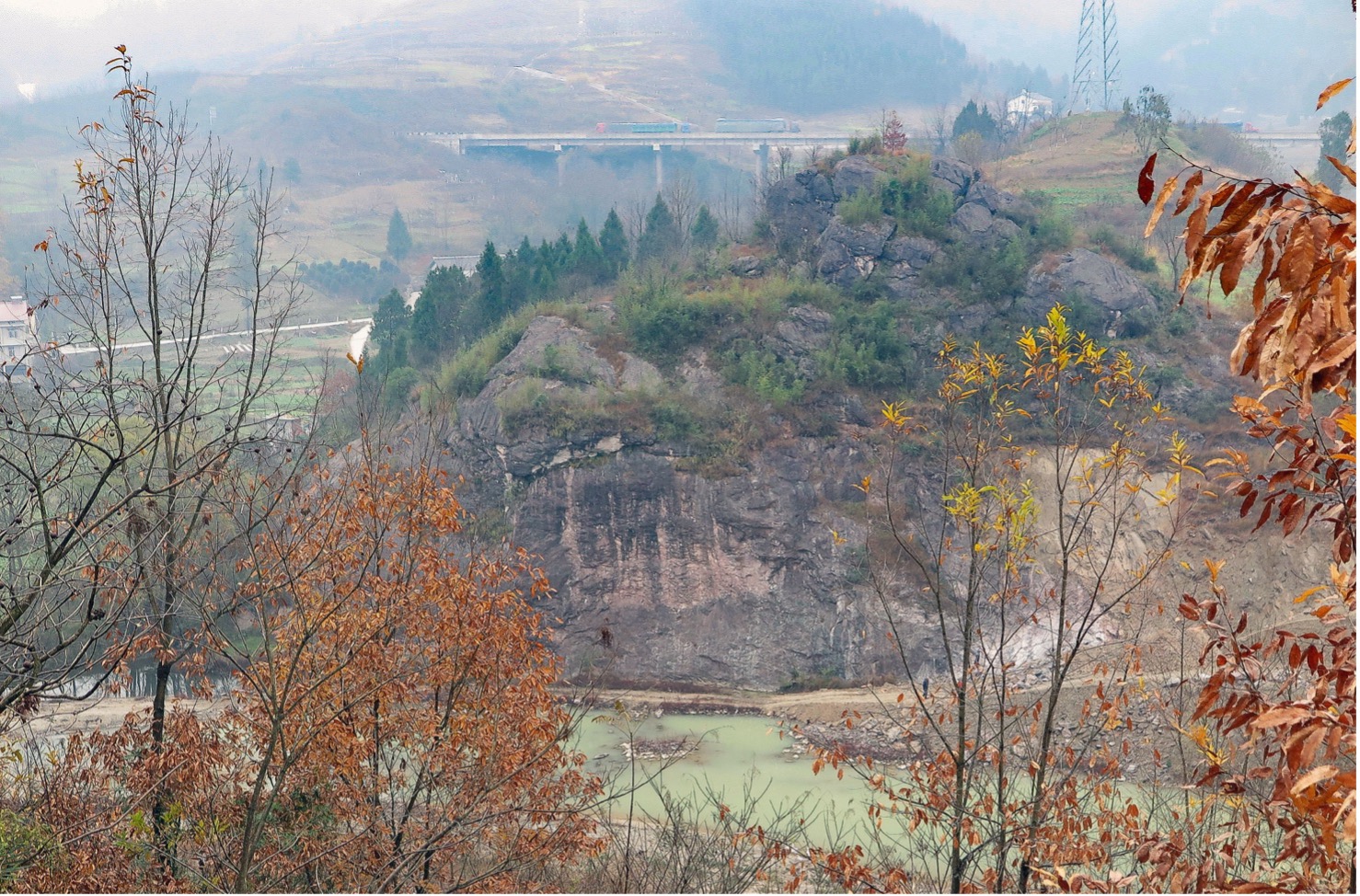Ningqiang Fm
Type Locality and Naming
It was named by Yu Changming et al in the middle—late sixties of the 20th century (Nanjing Institute of Geology and Paleontology, Chinese Academy of Sciences, 1974). The type section is at Dazhuba, about 30 km southwest of the Ningqiang County seat in southern Shaanxi Province.
Synonym: (宁强组) . Grabau (1924) named the Silurian strata exposed in Ningqiang of Guangyuan City the “Chaotien” Fm, the “Huangpayi” Fm and the “Chienshui” Limestone. The “Chaotien” Fm was named near Chaotianzhen Township, probably indicating the Silurian strata exposed from north of Chaotianzhen Township to Qinfengxia with the main stratohorizons just of the Ningqiang Fm. The “Huangpayi” Fm was named at Huangbayi of Ningqiang and probably comprised the Wangjiawuan Fm and the Ningqiang Fm exposed at north and south of Huangbayi. The “Chienshui” Limestone probably represented the Silurian from Xuanhe to Zhongzipu of Guangyuan City in north Sichuan Province and should also belong to the Ningqiang Fm (Chen Xu et al, 1991). The above-mentioned stratigraphic names, which have long been unused and, hence, already forgotten, should be better abolished.
Lithology and Thickness
The formation, 148 m in total thickness, consists of purplish red, bluish gray argillaceous limestone, bluish gray shale intercalated with thin-bedded knotty limestone, bioclastic limestone and reef limestone. The formation is subdivided into Yangpowan Member and Shenxuanyi Member in ascending order (Figure).
[Figure. The purple reef limestone from the lower part of the Shenxuanyi Member, Ningqiang Fm at Xuanhe Fenghuangzui Section, Guangyuan Xian, Sichuan (Photography by Wang Guangxu)]
Relationships and Distribution
Lower contact
It represents continuous sedimentation from the underlying Wangjiawan Fm
Upper contact
It is in disconformable contacts with the overlying Chejiaba Fm of latest Silurian or with the Liangshan Fm (dark gray limestone) of the late-Early Permian.
Regional extent
The Ningqiang Fm is exposed in north Sichuan and south Shaanxi provinces. The fossils indicate the correlation of the Shengxuanyi member with the upper member of the Xiushan Fm exposed in southeast Sichuan and northeast Guizhou.
GeoJSON
Fossils
The Yangpowuan member, about 1200 m in thickness, is dominated by greenish gray, yellow gray shale, silty shale, pelite intercalated with thin-bedded knotty limestone, organic limestone or limestone lenses. It yields graptolites Monograptus spiralis excentricus; brachiopod Nalivkinia cf. magna, Salopinella minuta, Spinochonetes notata, Mesopholidostrophia minor, Atrypoidea lentiformis, Atrypopsis rongxiensis; trilobite Kosovopeltis, Coronaspis, Encrinuroides, Kailia, Astroproetus; bivalves Nuculites, Deceptrix, Palaeoneilo; anthozoa Favosites, Donacophyllum, Tabularia; cephalopod Eridites, Sichuanoceras, Kionoceras, etc.;conodonts Ambalodus galerus, Pterospathodus celloni, P. pennatus, Apsidognathus tuberculatus and chitinozoa Angochitina longicollis, Ancyrochitina brevicollis, Conochitina sp., etc. According to the above-listed fauna, the Yangpowuan member is middle Telychian of Llandovery epoch in age and equivalent to the upper part of the griestoniensis zone.
The lower part of the Shengxuanyi member corresponds to the Ningqiang Fm proposed by Yu Changming, Chen Xu et al. The member is most well developed on the slope from Zhongzi to Fujiawuan, Guangyuan in northern Sichuan Province. It is characterized by yellow green plus purplish red shale, pelite intercalated with several suites of dark gray limestone;purplish red hermatobiolithic (reef) limestone often occurs at its base. The member is disconformable overlain by the Devonian(?) sandstone. It bears fossils dominated by shelly fossils including: brachiopods Salopinella minuta, Atrypoidea lentiformis, Atrypopsis rongxiensis, Gotatrypa lauta, Quangyuania ovalis, Pentlandina sinensis, Epitomyonia sp., Striispirifer hsiehi, Nikiforovaena flabillum, Howellella sp., etc.;trilobites Coronaspis, Coronocephalus, Encrinuroides, Kailia, Rongxiella, Astroproetus, etc.; ostracod Eurychitina, Bairdiocypris; cephalopods Sichuanoceras, Protobactrites, Actinodochmioceras, Protokionoceras, Parahelenites, etc.; bivalves Deceptrix, Modiomorpha, Leptodesma; gastropod; bryozoa; chitinozoa Angochitina longicollis; conodonts Ambalodus galerus, Ozarkodina adiutricis, Pterospathodus celloni, Apsidognathus tuberculatus, etc.; graptolites Stomatograptus grandis, S. sinensis, etc.
Age
Depositional setting
Additional Information
